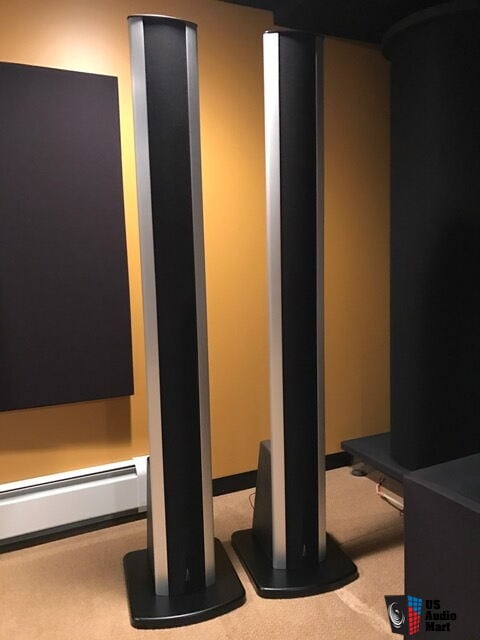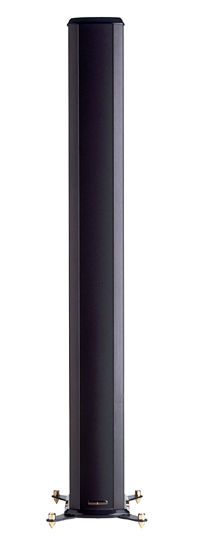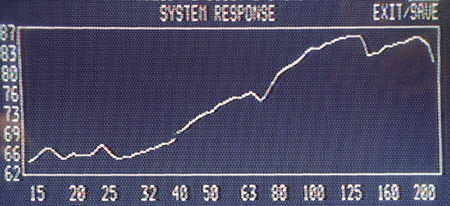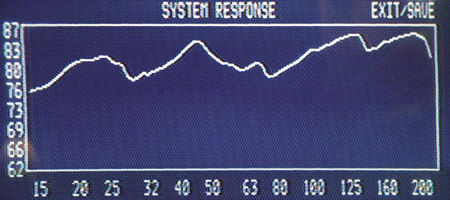Bohlender Graebener Radia 520 Speaker pair:
Listed · 285 Views
This listing has ended.
Listings Similar to Bohlender Graebener
Time Left: None
This listing has ended.
| Condition | |
| Payment methods | |
| Ships from | Los Angeles, CA, 90077 |
| Ships to | United States and Canada |
| Package dimensions | unspecified |
| Shipping carrier | UPS |
| Shipping cost | Specified after purchase |
| Research Pricing |
Bohlender Graebener Model 520 Radia series Speakers pair /// (not the i version).

We are offering a great deal on a nice sounding pair of planar speakers that preferably will be perfect for someone in the Los Angeles area.
Local pickup is preferred as these speakers will be very difficult to pack and ship. If shipping add $175 to make boxes + shipping & listed fees listed below.
Please note: the speakers bases have a finish that has a flexible finish over it it has an hard to see cracked and a small chipped area on one of the speakers, being cosmetic damage only (can be re-glued down or re finished).
It is rated at 6/10 because of this and priced to move fast and find a buyer looking for great value and sound quality. Otherwise they are in great condition and you can even re finish the base, make new ones or glue it (see pictures).
INFORMATION on the 520i (we have the non i version):
Stereophile's Larry Greenhill December 19, 2004
Bohlender-Graebener Radia 520i loudspeaker
 Igor Levitsky, speaker designer for Bohlender-Graebener Corp. (aka BG Corp.), has taken advantage of the slim tower motif in the design of the Radia 520i speaker, which has a 50" midrange-tweeter ribbon driver. This narrow driver offers wider horizontal dispersion than a panel speaker, while suppressing strong early reflections from the floor and ceiling by acting as a line source. A line-source speaker radiates a cylindrical wavefront, which suffers milder propagation losses than does a conventional cone driver. Levitsky mounted the 520i's ribbon driver in a tall, open aluminum frame to minimize cabinet resonance effects.
Igor Levitsky, speaker designer for Bohlender-Graebener Corp. (aka BG Corp.), has taken advantage of the slim tower motif in the design of the Radia 520i speaker, which has a 50" midrange-tweeter ribbon driver. This narrow driver offers wider horizontal dispersion than a panel speaker, while suppressing strong early reflections from the floor and ceiling by acting as a line source. A line-source speaker radiates a cylindrical wavefront, which suffers milder propagation losses than does a conventional cone driver. Levitsky mounted the 520i's ribbon driver in a tall, open aluminum frame to minimize cabinet resonance effects.
The 520i's ribbon covers the spectrum above 350Hz and fires through a 30mm-wide slot in an aluminum frame. The ribbon itself consists of a diaphragm of polymer film strung with aluminum conductors, which carry the audio signal, suspended between push-pull magnet arrays. Levitsky complements the ribbon with two 6.5"-cone woofers mounted in the 520i's 7.75" by 13.75" lower enclosure, made from MDF. These provide bass down to 70Hz. The crossover uses modified fourth-order Linkwitz-Riley filters, with an in-phase driver connection.
Some assembly is required before the Radias can be used. The tall, thin towers must be anchored to their flat brass bases with ¼" hex-head screws. Four legs extend out from the base, each tipped with a sharp spike. Top caps are then mounted on each speaker column. (The caps are packed separately so that the 520i box keeps within UPS's maximum package length.) Although not described in the accompanying information sheets, the metal brackets at the back of each plastic cap must be slid under two mounting screws at the top of the speaker column. The front and back grilles can be removed by pulling them up and lifting them out of their black anodized rails—sort of like unzipping a zipper.
Setup & fine-tuning
I set up the Bohlender-Graebener Radia 520i's in the exact spots usually occupied by my reference Quad ESL-989s: 8' apart, 5' from the back wall, and 3' 9" from the side walls. Moving the BGs into position, I was struck by the towers' height (over 70"), narrowness (under 8"), and relative lightness (59 lbs). I did my listening in my lightly damped, rectangular listening room, which is 26' long, 13' wide, and 12' high. Behind my listening chair, the other end of the room opens into a 25' by 15' kitchen. All listening was done with the BGs' grilles in place. For purposes of stability, I left the spikes in the floor stands.
First, I had to decide: Did I need a subwoofer for this review? Without a sub, the BG Radia 520i generated a wide soundstage, with a smooth upper midrange and highs and fast, accurate sound. On first listen, I was surprised and pleased to find that the 520i also had a fast, true upper-bass response. For soloists and for some percussion, I didn't miss the bass extension. But the lack of the deep bass on recordings that feature bass drum and pipe-organ pedal tones made such music less dramatic and involving. In addition, the 520i's two woofers grew mildly distorted when driven extremely hard with bass drum passages or rock music. Deep, powerful bass drum notes, in particular, seemed muffled and distant, and greatly changed in tonality. I decided to listen with and without a subwoofer.
True, I'd used the BG Radia 520i in the final listening sessions for my review of Revel's Sub 30 subwoofer (Stereophile, November 2004). The Sub 30 had been placed in the right rear corner, behind the plane of the Radias. A pair of stereo interconnects ran from the Mark Levinson ML-7a preamplifier to the line-level right and left inputs on the Sub 30's rear panel. The Sub 30's high-pass filter was set to 80Hz and 12dB/octave, its low-pass filter to 80Hz and 48dB/octave, its Contour switch to Music. Interconnects were run from the Sub 30's right and left output jacks to a pair of Mark Levinson ML-2 power amplifiers, which drove the BGs.
When I first set up the Radias with the Revel sub, the phase and channel-identification checks on Stereophile's first Test CD (Stereophile STPH002-2) revealed that the BGs' phase was inverted. Eric Graul, production manager at BG Corp., helped me track down the problem: the Revel Sub 30's electronics inverted phase. When driven directly from the preamplifier, the 520is were in phase. Whenever I added the Revel to the system, I set its Phase control to 180 degrees.
I then used the built-in signal generator, microphone, and virtual spectrum analyzer of a Velodyne DD-18 subwoofer to evaluate the BG 520i's in-room frequency response at my listening position with and without the Revel subwoofer. (Velodyne's technology is not part of the BG 520i's or Revel Sub 30's standard installation packages; see Stereophile, June 2004, p.133.) I set up the Velodyne's calibration microphone on the back of my listening chair at my ear level, 37" from the floor, and set the DD-18's volume control to "0" so that it would put out no audio signal. I then keyed the Velodyne's remote control to display its System Response screen on my TV monitor. This automatically initiates a repeated sweep tone from the DD-18's signal generator, which is then fed into a tape input on my preamp. When I drove the BG 520i without the subwoofer (fig.A), its frequency response showed peaks at 180Hz and 125Hz, falling gradually below that point, to -3dB at 90Hz and -10dB at 60Hz. Adding the Revel Sub 30 extended the response down to 20Hz, ±6dB (fig.B).

Fig.A BG Radia 520i, in-room response, 15-200Hz (4dB/vertical div.).

Fig.B BG Radia 520i with Revel Ultima Sub 30, in-room response, 15-200Hz (4dB/vertical div.).
Sound
The BG Radias' strengths were in imaging, speed, extended dynamic range, and translucent mids and highs. Their soundstage was wide and deep, with surprising spatial resolution of different instruments or voices in a chorus. Jerome Harris' Taylor acoustic bass guitar and the kick drum in "The Mooche," from his Rendezvous CD (Stereophile STPH013-2), were placed directly in the center, Art Baron's trombone right of center, and Marty Ehrlich's alto sax far right. The 520i captured the shimmering bronze of Billy Drummond's Zildjian ride cymbal at the song's beginning, the plunger-muted trombone's brassy blattiness, and the crackle of the air in the mouthpiece of the sax. I was easily able to hear the call and response between trombone and sax.
The Radias accurately reproduced the spatial ambience of Robert Silverman's performance (via a large Bösendorfer reproducing piano) of the second movement of Beethoven's Piano Sonata 24, Op.78 (from his 10-CD set of the complete sonatas, OrpheumMasters KSP 830, engineered by John Atkinson), and the reediness and acoustic venue surrounding Antony Michaelson's clarinet in the Larghetto of Mozart's Clarinet Quintet in A, K.581, from Mosaic (CD, Stereophile STPH015-2). Listening to the excerpt from Elgar's The Dream of Gerontius on Test CD 2 (Stereophile STPH004-2), I was stunned by the width and depth of the soundstage: tenor far left, brass section far right, and the double choir set well back.
Well-recorded vocalists and instruments were what most benefited from the 520i's clarity and dynamics; they were reproduced with their timbres balanced and natural, free of speaker-introduced tonalities. Bud Shanks' virtuoso alto-sax and flute playing on the title track of the L.A. Four's Going Home (CD, East Wind 32JD-10043) had highs that were extended, open, and smooth. During "Silk Road" and "Running Water," from I Ching's Of the Marsh and the Moon (CD, Chesky WO144), I greatly enjoyed the timbres, sonorities, and resonances of Sisi Chen's Chinese dulcimer and Tao Chen's bamboo flute.
Dynamics were reproduced with incredible speed and an unusually wide range. The otherwise transparent and speedy Mark Levinson ML-2 monoblocks (50W RMS into 4 ohms) began to clip, so I switched to the more powerful Mark Levinson No.334 stereo amp (250Wpc RMS into 4 ohms) to get a better sense of the 520i's dynamic capabilities. Eva Cassidy, singing "Bridge Over Troubled Water" on Live at Blues Alley (CD, Blixstreet G2-10046), never sounded so good. The BG 520i conveyed the stunning dynamic range of her voice without ever overloading, honking, or running out of steam. I was also transfixed by the shimmer, sheen, timbre, and reediness of the reverberating chimes and the bassoon that open Owen Reed's La Fiesta Mexicana, on Fiesta (CD, Reference RR-38CD). However, the Revel Sub 30 was needed to hear the drama and power of the bass drum that opens this piece.
The subwoofer also enabled the Radias to span the dynamic range between drummer Mark Walker's tiny cymbal taps and the room-shaking kick-drum beats on "Nardis," from Patricia Barber's Café Blue (CD, Premonition/Blue Note 21810 2). Similarly, the Radias resolved the tangled but powerful syncopations underlying Brady Blade's explosive drum solo on "The Maker," from Emmylou Harris' Spyboy (CD, Eminent EM-25001-2). This live performance was resolved with stunning detail by the 520i: Harris' burned-out voice, the crowd noise and catcalls, Buddy Miller's lead electric 12-string and mando guitar, Blade's tight work on snare, bass pedals, and tom-toms. The Sub 30 also allowed me to enjoy deep organ-pedal passages with the Radias, particularly those in "Lord, Make Me an Instrument of Thy Peace" and "A Gaelic Blessing," from John Rutter's Requiem (CD, Reference RR-57CD).
The culmination of my listening experiences with the BG 520i was its dead-on portrayal of the complex orchestral timbres, instrumental placement, syncopated rhythms, driving pace, and wide dynamic range of Stravinsky's The Rite of Spring, performed by Eiji Oue and the Minnesota Symphony (CD, Reference RR-70). The 520i fully captured the eerie bassoon solo, played in an unusually high register, that opens the work. I heard and sensed the ballet's driving rhythms, magnified by the offbeat accents and the complex asymmetry of soft trumpets answered by cello pulses in the "Convocation of the Ancestors," where the roll of timpani is reinforced by the huge beat of a bass drum. The frenzy mounted further in the "Sacrificial Dance," where the speaker's superfast recovery allowed it to reproduce the sound of the musicians turning pages between timpani strokes! I found myself closing my eyes and tumbling into the music, so overpowering and involving was the experience.
Conclusions
The Bohlender-Graebener Corp. has achieved its goal of designing and manufacturing a tall, slim line-source loudspeaker with a small footprint that can compete with more expensive audiophile designs. The Radia 520i is faster, more dynamic, and better at imaging and involving the listener in the drama of music than it has a right to be at its price of $3998.
But doesn't it need a subwoofer to realize its full potential? While that's true, you might not miss a subwoofer if your musical tastes run more to singers than to pipe organs—I thought Eva Cassidy and Emmylou Harris sounded better when the Revel Sub 30 subwoofer wasn't playing. Many potential owners could start with the Radia 520is alone, then add a subwoofer if needed.
I was surprised to discover that the 520i put out enough bass for a range of different types of music. However, it couldn't repeal the laws of physics. When the music's bass demands increased, the 520i's woofers could strain and distort. Most often, the Radias provided clean, nonfatiguing sound, superb soundstaging that placed the instruments and voices with rock-solid stability, a wide dynamic range, and overall transparency. Add to all that its high build quality, moderate price, and ability to capture small musical details and instrumental timbres, and the Radia 520i earned my respect.
At $4000/pair, this loudspeaker is the best high-end value I've encountered in a long time, and its quality grew even more over the time I spent with it. Bohlender-Graebener Corp.'s Radia 520i gets my strongest recommendation.
Description: Two-way, floorstanding, sealed-box loudspeaker with line-source ribbon upper-frequency driver. Drive-units: 50" by 1.1" planar-magnetic coaxial midrange and HF ribbon; two 6.5" cone woofers. Crossover frequency: 350Hz. Crossover slopes: fourth-order, Linkwitz-Riley. Frequency response: 70Hz-20kHz, ±6dB. Sensitivity: 88dB/2.83V/m. Nominal impedance: 4 ohms. Recommended amplification: 50-250W continuous, 300W peak.
Dimensions: 70.25" (1800mm) H by 7.75" (200mm) W by 2.75" (70mm) D. Base: 13.25" (340mm) W by 17.25" (442mm) D. Weight: 59 lbs (26.8kg).
Finishes: Black anodized aluminum tower, black or mahogany base.
Serial numbers of units reviewed: 02222, 02223.
Price: $3998/pair. Approximate number of dealers: 125.
Manufacturer: Bohlender-Graebener Corp., 1780 Forrest Way, Carson City, NV 89706. Tel: (888) 875-2627, (775) 884-1800. Fax: (775) 884-1276. Web: www.bgcorp.com.
============================
* * * We are always interested in purchasing quality Audio and Video items, LP collections and quality trades are welcomed. * * *
Please feel free to view our other used items for sale on Audiogon or come to our website to view our new products and see the exciting new lines we have to offer you like Bowers & Wilkins, Bryston, Aqua Acoustics, Rel Acoustics, Synergistic Research, Roon Labs, Pro-ject, Van Den Hul, Marantz and many others.
We are proud to be the Los Angeles dealers representing the new B&W D4 Diamond Series speakers and many fine products by appointment.
* * * We are always interested in purchasing quality Audio and Video items, LP collections and quality trades are welcomed. * * *
Please feel free to view our other used items for sale on Audiogon or come to our website to view our new products and see the exciting new lines we have to offer you like Bowers & Wilkins, Bryston, Aqua Acoustics, Rel Acoustics, Synergistic Research, Roon Labs, Pro-ject, Van Den Hul, Marantz and many others.
We are proud to be the dealers representing the new Diamond B&W Reference Speakers.
It is best to call David and visit: www.weinhartdesign.com with questions or come to our Los Angeles Showroom 310-472-8880 or on my cell after hours and weekends 310-927-2260 any time from 10AM - 7PM PST.
Weinhart Design has lots of other items new and used and if you’re in Los Angeles or visiting please accept my invitation to experience our World Class Audio Showroom and please visit our web site @ www.weinhartdesign.co
We accept payments by Bank Wire Transfers without fees and is the only form of payment on all sales out of the U.S. and Canada.
We prefer this method of payment and also makes shipping to addresses other than billing agreeable. VISA, MC and Papal are gladly accepted within the U.S. and Canada as long as the charge is approved and shipping to the billing address is to the one on record and plus 3% to cover card service costs.
Please call me directly in my world class showroom in Los Angeles weekdays @ 310-472-8880 or any reasonable time on my cell including weekends @ 310-927-2260 and I can answer your questions and help you with all of your new and pre owned needs.
Changing the Way You Listen,
The Audio and Video Experts...
David Weinhart and the Weinhart Design Audio team
President & CEO [email protected]
Visit our Weinhart Design Audiogon The AV Experts STORE:
2337 Roscomare Road, Studio #1
Los Angeles, California 90077
(Showroom) 310-472-8880
(Cell) 310-927-2260 10AM-7PM West coast time
www.weinhartdesign.com
🎶 🎵 🎶
No questions have been asked about this item.
Ask the seller a public question
You must log in to ask a question.
Return Policy
Return Window
Returns are not accepted on this item.








